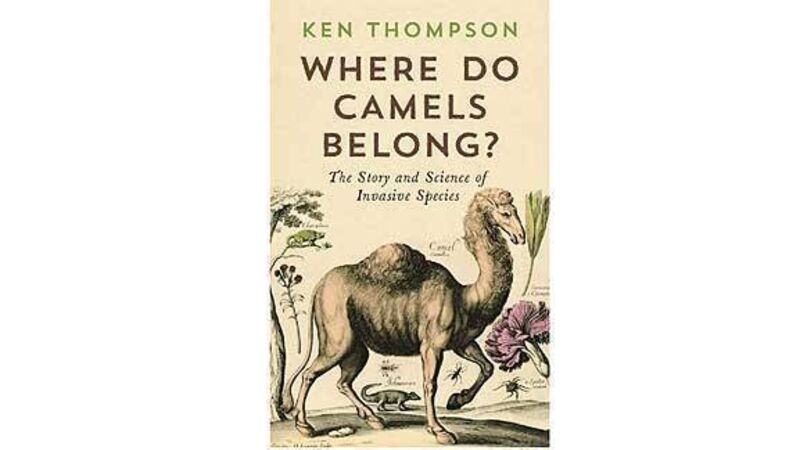Where Do Camels Belong?

The sub-title of this book explains what it’s about: ‘The Story and Science of Invasive Species’. The main title illustrates the author’s provocative and sometimes mischievous approach to his subject. He gives four answers to the question, each of which he claims is a valid one ...
They belong in the first place you think of when you hear the word ‘camel’, ie, the Middle East; in North America, where they first evolved, lived for tens of millions of years, achieved their greatest diversity, and where they became extinct only recently; in South America, where they retain their greatest diversity (llamas, vicunas, alpacas and guanacos are all camels); and in Australia, where the world’s only true wild (as opposed to domesticated) dromedaries now occur.
Dr Ken Thompson is a fine scientist, but he revels in attacking some of the more complacent assumptions of orthodox science. One of these assumptions is that “native” species are always good and “alien” species are always bad. This assumption is reinforced by the fact that the adjective “invasive” is often attached to alien species.
He sets out to show that this is not only largely untrue, the reality is the we are often confused about what is native and what isn’t (which is the point of the question about where camels belong). He goes further and suggests that many of the horror stories about invasive aliens are invented by scientists trying to raise research grants to study the species in question.
This is all very interesting and it’s relevant to conservation in Ireland. There have been many horror stories about invasive species in this country in recent decades. Mink, zebra mussels, Japanese knotweed, roach, gunnera, New Zealand flatworms, to name just a small selection.
But there is a shortage of hard scientific evidence showing large scale environmental or economic damage resulting from these ‘plagues’. The story of the roach is a good example. The species was introduced into the Munster Blackwater in 1889 and for some time it was confined to this river system. But in the mid 20th century they started appearing countrywide, almost certainly illegally introduced by coarse anglers, and breeding prolifically. This was hailed as the end of the world by fisheries scientists and huge amounts of energy and money were spent trying to eradicate them. I recall a trawler operating on Lough Derravaragh and sending tons of roach off to be processed into meal. None of the control measures worked, but the roach, of their own accord, stopped breeding prolifically, settled into an ecological balance with other freshwater fish (most of which are also non-native) and are now regarded as a valuable addition to our angling species.
This pattern is repeated in the case of many other species. The zebra mussel has almost certainly done more good than harm, providing a valuable food source for fish and wildfowl and improving water clarity in many eutrophied lakes.
Some new arrivals, such as the little egret, have been welcomed, which is really very illogical. It is these paradoxes that Ken Thompson highlights, with examples from around the world. He is an excellent writer of popular science, with an easy, witty style but it is a shame the book is let down by its illustrations, which are mainly poorly printed black and white photographs. Despite this, I really enjoyed the book, which certainly succeeded in making me re-examine some of my own thinking on the subject.











